Arak, a traditional distilled beverage, holds unique significance in Bali as it is the only Indonesian island where it can be legally enjoyed in a variety of settings.
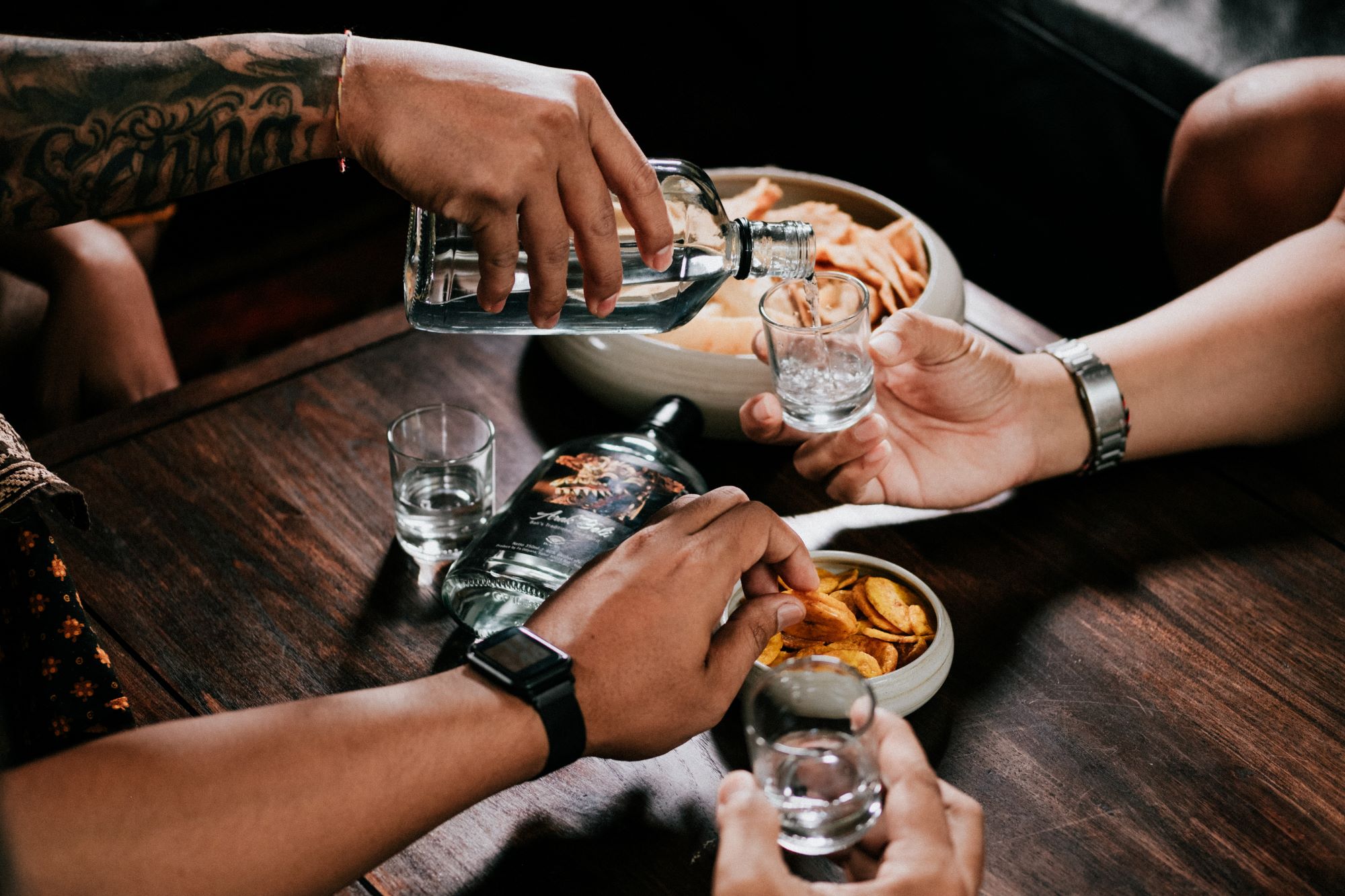
Known locally as Arak Bali, this spirited drink is a vivid emblem of the island’s rich heritage. However, it also has a darker side, with reports linking it to blindness and death.
In this article, we'll unravel the captivating history of Arak Bali and provide essential tips on how to savour this iconic drink safely.
Arak Bali
The story of Arak begins with the Mongol invasion, which is believed to have introduced distillation technology to Java. From there, it journeyed to Bali through migrants fleeing the crumbling Majapahit kingdom.
In Indonesia, alcohol production and consumption are subject to strict regulations or outright prohibitions. For example, Aceh and Papua have bans on alcohol, while in places like Jakarta, its distribution is limited to hotels, bars, and restaurants.
However, Bali, as a predominantly Hindu and touristic island, uniquely permits the production, distribution, and consumption of Arak, making it a distinctive feature of the Island of Gods.
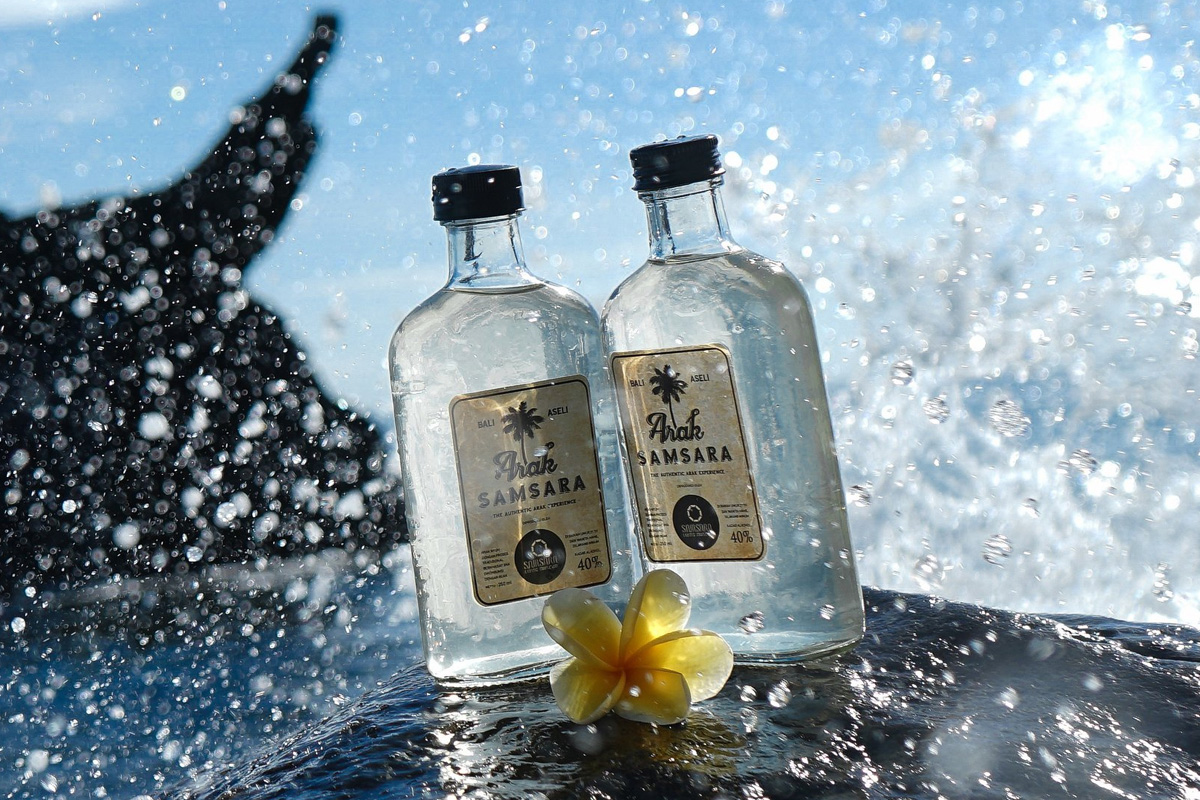
In January 2020, Bali's Governor officially legalised Arak. This was followed by its recognition as one of Indonesia’s Intangible Cultural Heritage by the Ministry of Education, Culture, Research, and Technology in 2021. By 2022, Arak Bali was even chosen as a souvenir for G20 Bali Summit attendees.

Additionally, January 29 has been designated "Arak Bali Day" to celebrate this iconic drink.
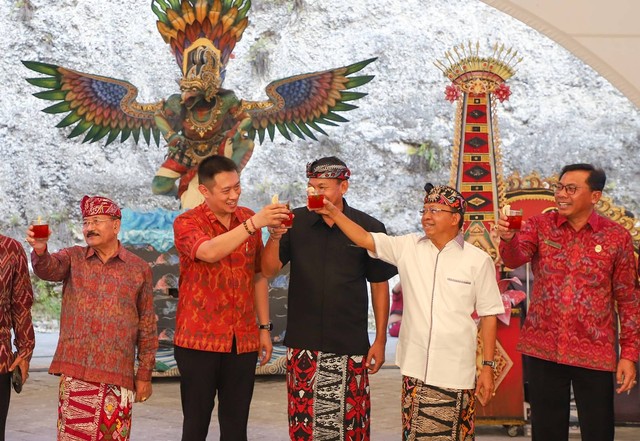
Arak Bali's alcohol by volume (ABV) can vary significantly, typically starting at 40% but reaching up to 60% with double distillation.
The production of Arak Bali begins with tapping coconut or palm trees to collect sap.
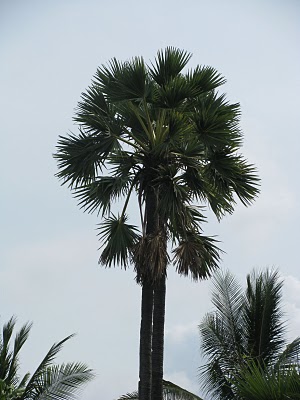
This sap is mixed with coconut fibre and left to ferment for 2-3 days.
After fermentation, the mixture is distilled for about 12 hours.
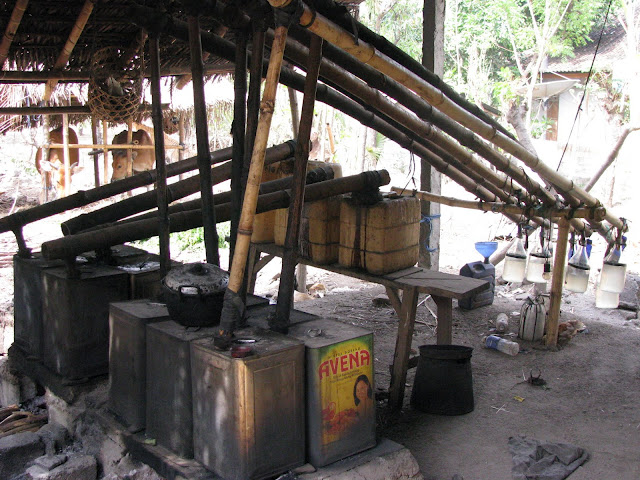
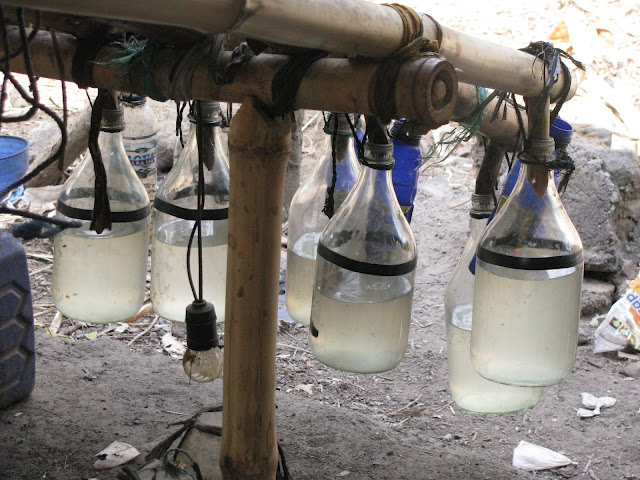
The entire process takes 3-4 days and yields around 30-45 litres of Arak Bali.
While most Arak Bali is transparent, some may have a slight tint due to flavourings like apple.
Locally, Arak Bali is a popular choice for an affordable night out, with many locals and expats opting for budget-friendly options from local shops instead of premium brands.
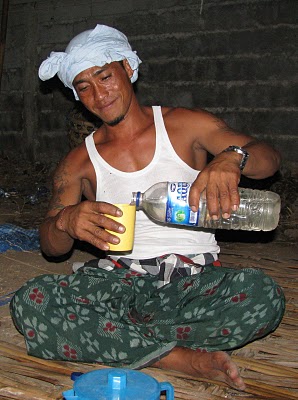
It's commonly enjoyed neat or mixed with Coca-Cola. A popular local tradition involves sharing a single shot glass of Arak Bali, where one person pours shots, and each participant takes a turn.
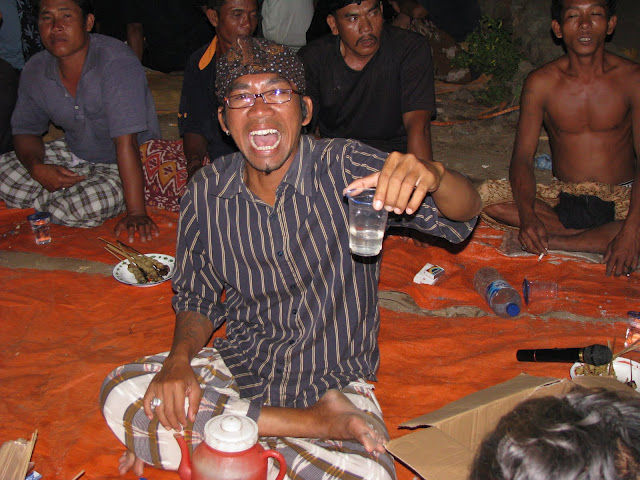
Prices for Arak Bali can vary widely: a 500ml bottle purchased at a local store might cost around 25,000 IDR, while premium 750ml bottles at supermarkets can reach up to 800,000 IDR.
Safety of Arak – Methanol Poisoning
Safety is a significant concern when consuming unlicensed black-market Arak, primarily due to the potential presence of methanol which is a highly toxic substance that can cause severe health issues, including blindness and death.
Methanol is a by-product of the distillation process and can be highly toxic if not adequately filtered out.
Methanol poisoning occurs for two main reasons:
1. Improper Brewing: Homemade Arak may produce methanol instead of ethanol due to improper brewing methods. Some illegal Arak manufacturers do not properly distil the alcohol, leaving dangerous levels of methanol in the final product.
2. Deliberate Addition: Methanol is sometimes illegally added to alcoholic beverages as a cheaper and more potent alternative to ethanol.
Symptoms of Methanol Poisoning
Methanol poisoning typically progresses through two stages, with an intermediate latent period where symptoms might temporarily subside or appear mild.
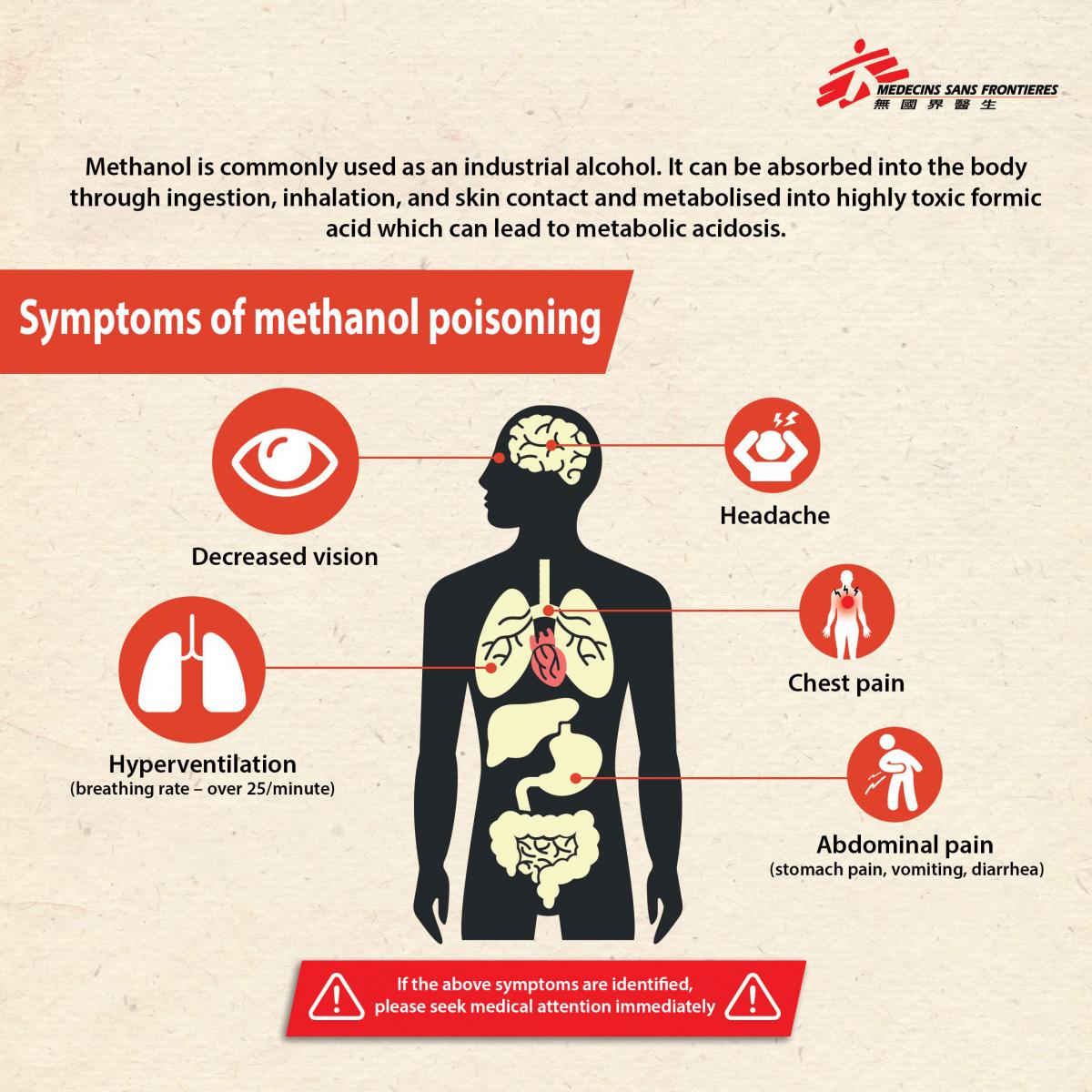
Here’s a breakdown of the stages:
Initial Stage (30 minutes to 24 hours after ingestion)
During the initial stage, symptoms may resemble those of mild alcohol intoxication or be non-specific, including:
- Nausea and vomiting
- Headache
- Dizziness and general weakness
- Pain or discomfort in the abdomen
- Mental confusion and lack of coordination
- Tachycardia or a rapid heart rate
Latent Period (6 to 24 hours after ingestion)
Following the initial symptoms, there can be a latent period where symptoms may temporarily subside or appear mild. During this phase, individuals might feel relatively better, leading to a false sense of security. However, toxic metabolites are accumulating in the body, which can lead to severe symptoms later.
Late Stage (12 to 72 hours after ingestion)
As the body metabolises methanol into toxic compounds like formic acid, more severe and life-threatening symptoms develop:
- Vision Problems: Blurred vision, decreased visual acuity, or complete blindness.
- Difficulty Breathing: Shortness of breath and difficulty breathing.
- Metabolic Acidosis: This can lead to deep, rapid breathing (Kussmaul respirations) as the body tries to compensate for the acid-base imbalance.
- Severe Abdominal Pain: Worsening abdominal pain and discomfort.
- Hypotension: Low blood pressure, which can lead to shock.
- Convulsions: Seizures may occur in severe cases.
- Coma: The most severe cases can result in a coma or even death if not treated promptly.
Methanol Poisoning Requires Urgent Medical Attention
If methanol poisoning is suspected, it is crucial to seek immediate medical attention even if initial symptoms seem to improve. Early intervention, including the administration of antidotes, can significantly improve outcomes and prevent the progression to more severe symptoms.
Treatment involves several steps:
- Antidotes: Administering ethanol or fomepizole, which act as antidotes by inhibiting the enzyme alcohol dehydrogenase, preventing the conversion of methanol to toxic metabolites.
- Haemodialysis: This procedure is used to remove methanol and its toxic metabolites from the blood, especially in severe cases.
- Supportive Care: This includes maintaining hydration, electrolyte balance, and addressing symptoms such as acidosis with intravenous bicarbonate.
Methanol Poisoning Prevention in Bali
To mitigate the risks of methanol poisoning, the Balinese government has imposed regulations requiring manufacturers to obtain legal permits, ensuring that Arak sold in shops is of high quality and safe for consumption. Legal Arak, produced by licensed manufacturers, is regularly tested and certified safe for consumption.
How to Tell Good Arak from Bad Arak
Unfortunately, it is impossible to distinguish good Arak from bad Arak by the look of the liquid alone. However, there are several ways to differentiate between legally manufactured Arak and black-market Arak:
1. Purchase from Reputable Brands: Always buy Arak from well-known, reputable brands (see below).
2. Buy from Reliable Shops: Purchase from reputable shops and avoid small corner stores.
3. Check the Price: Legally manufactured Arak is typically more expensive. While not all inexpensive Arak is harmful (otherwise, nobody would buy it), cheap black-market Arak is the leading cause of methanol poisoning in Bali, so it is best to avoid it altogether.
4. Look for ABV Labels: Reputable Arak brands will have labels indicating the alcohol by volume (ABV), whereas less trustworthy brands may not provide this information.
5. Check the Packaging: Good Arak comes in branded bottles with clear labels detailing the contents. In contrast, bad Arak is often produced in homemade stills and sold in plastic bags or plastic bottles. Bali.live recommends avoiding unlabelled Arak bottles, especially when purchasing from a new location.
6. Watch for Strong Odours: A strong odour might indicate the presence of methanol.
7. Notice Unusual Burning Sensations: A high percentage of methanol can cause an unusual burning sensation when consumed.
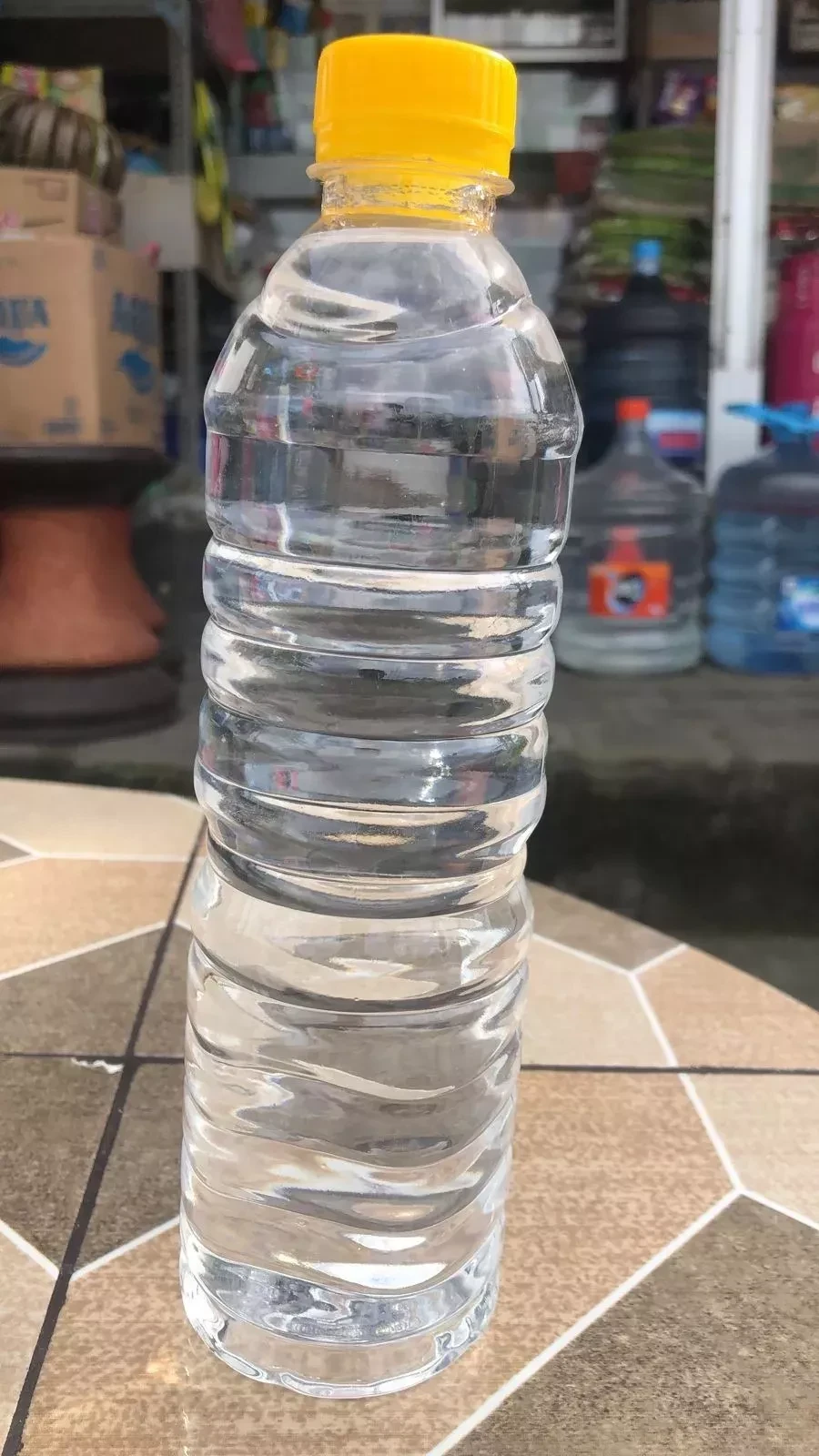
Buying Safe Arak
Several brands have gained popularity for their quality and safety:
Arak Bali Dewi Sri: Founded in 1968, it uses rice and a copper still to produce a smooth drink with an ABV of around 40%.
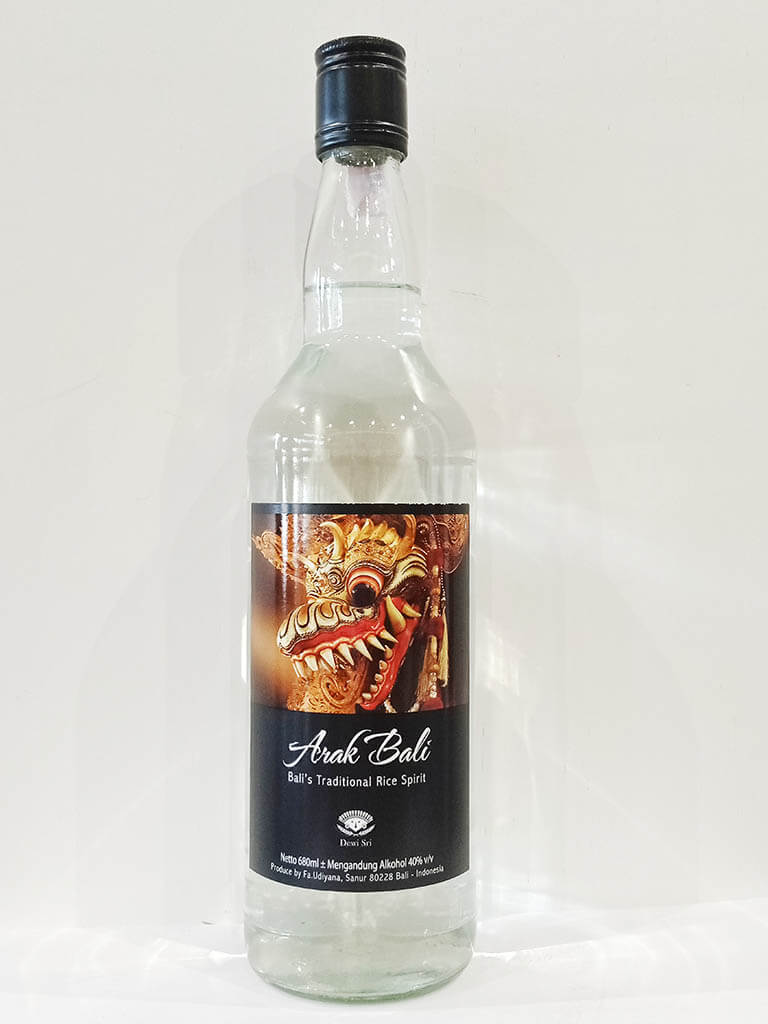
IWAK Arumery: Known for its premium, double-distilled Arak infused with exotic fruits and spices.
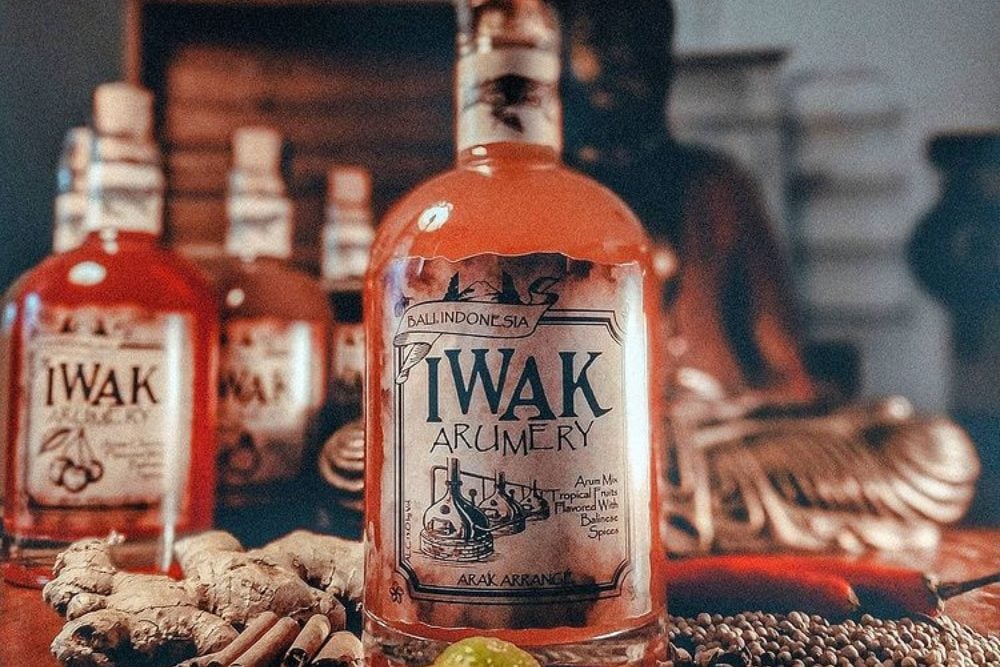
Karusotju: This brand offers a unique take on Arak by incorporating yam and producing varieties with different flavour profiles.
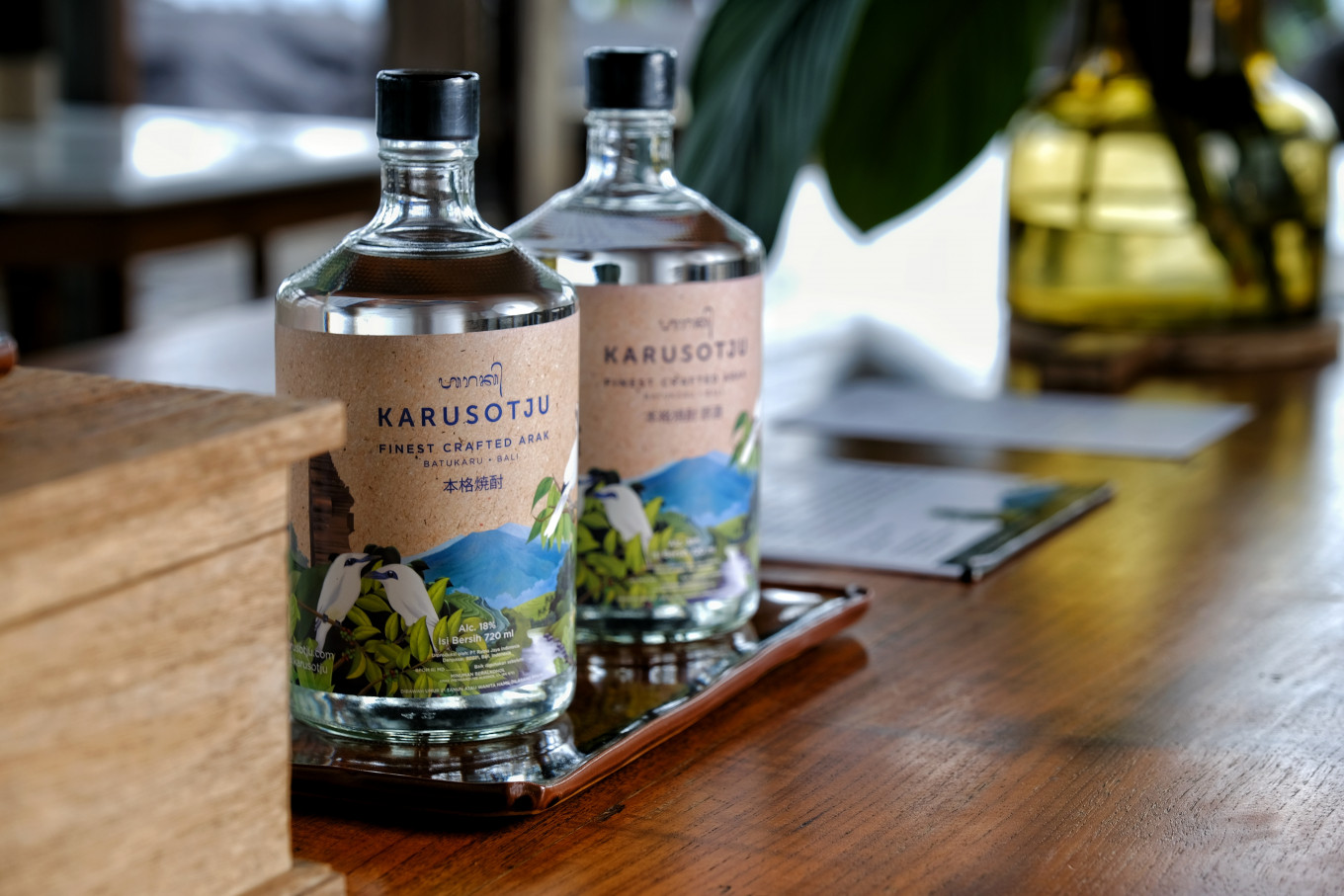
Arakbica: A lighter Arak at 30.6% ABV, infused with Arabica coffee.
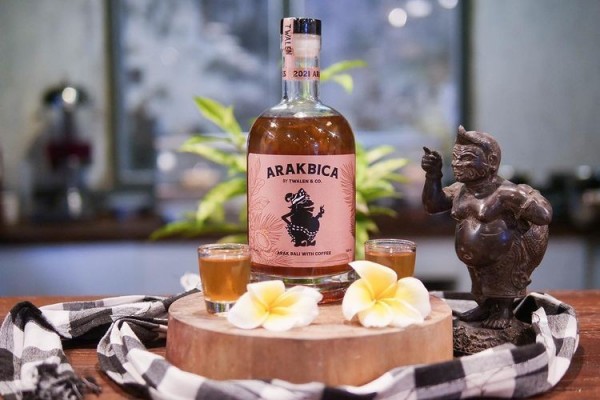
Selaka Ning: Utilises fermented snake fruit, resulting in a sweet flavour with 40% ABV.
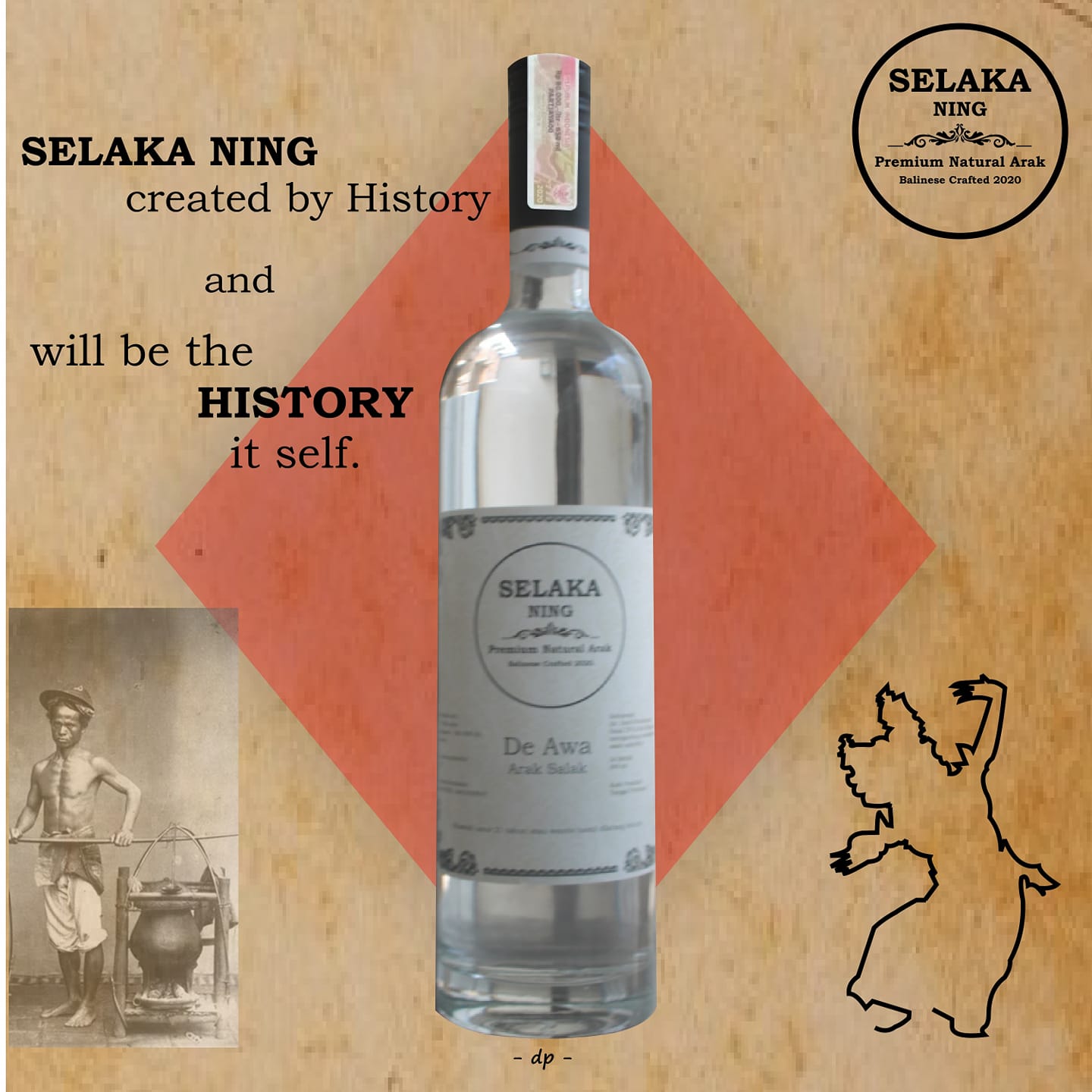
Final Thoughts on Arak Bali
Arak is more than just a drink in Bali; it is a symbol of cultural heritage and community. While it is essential to be cautious about the source of your Arak to avoid the dangers of methanol poisoning, experiencing this traditional spirit can be a memorable part of your visit to Bali.
Whether you prefer to savor this piece of Balinese tradition straight, with a fizzy drink, mixed in a delightful cocktail, or infused with floral and herbal tinctures, we wish you the most enjoyable experience drinking Arak Bali on the Island of Gods!
Yours, Ibu Tan
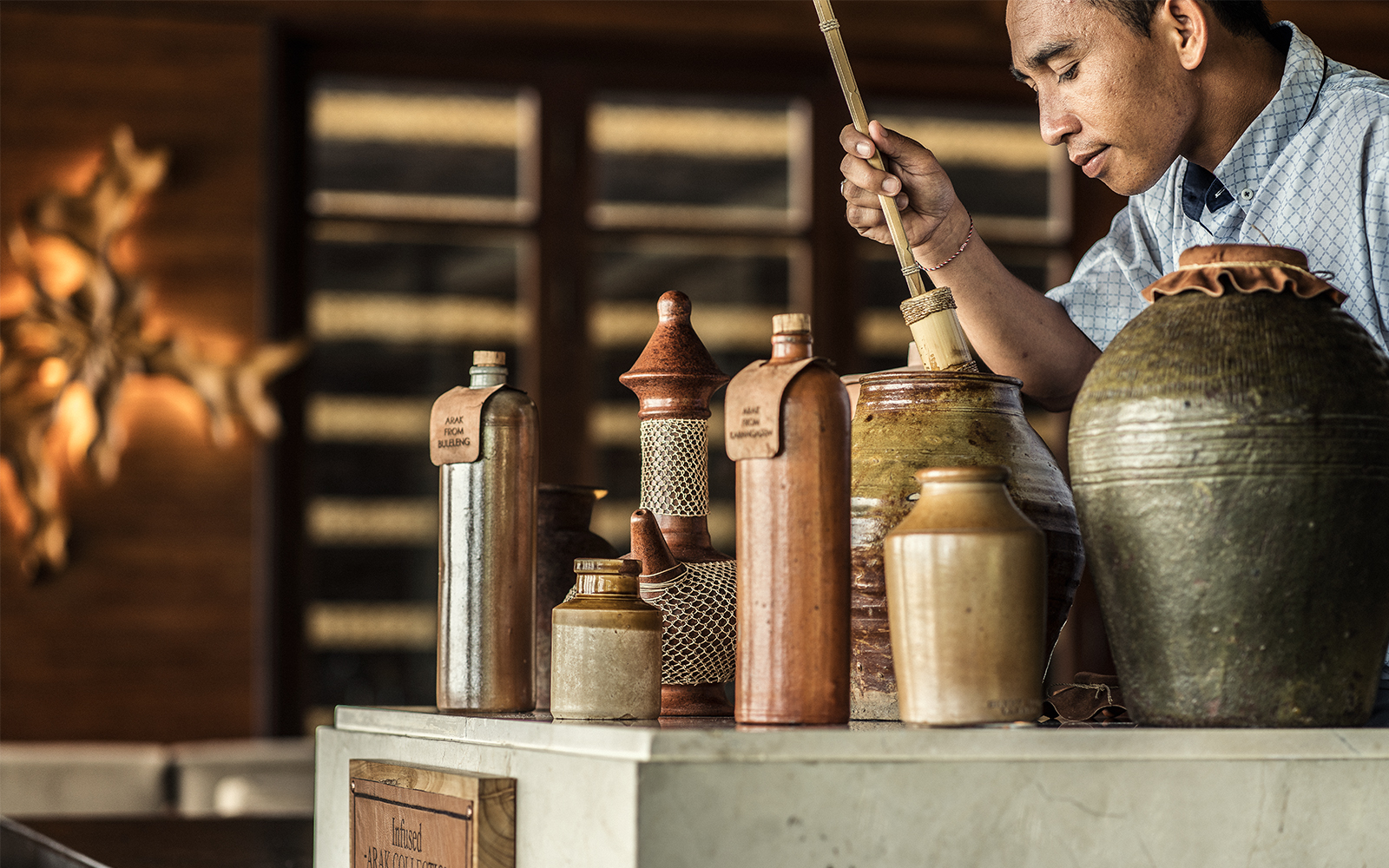
Sources: balipedia.com, finnsbeachclub.com, kaltim.tribunnews.com, methanol.org, nasional.kompas.com, wikipedia.org
You can add one right now!